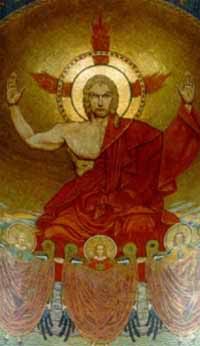Twice as many killed

http://www.heraldsun.news.com.au/common/story_page/0,5478,17698646%5E1702,00.html
ALMOST twice as many Catholic priests, other religious and lay workers were killed in violent incidents in the past year than in 2004, the Vatican's Fides news agency reported overnight.Of the 26 deaths, four priests and a nun were killed in Colombia, where Fides said "the Church is paying a heavy price for its commitment to reconciliation and social justice in the name of Gospel."
Other countries in the Americas where killings occurred were Mexico, Brazil and Jamaica, Fides said.
In Africa, Italian bishop Luigi Locati was murdered in Kenya, in an apparent power-struggle in the diocese he founded, while six priests and a lay worker died in the violence-ridden Democratic Republic of Congo.
In Asia, three priests were killed in India and one in Indonesia, while in Europe a priest active in helping immigrants was murdered in Brussels. Another priest was killed in Russia, near Moscow, "where he was building a pastoral community," Fides said.
Fides also referred to the "long list of 'unknown soldiers of the faith"' who lost their lives in 2005 and "of whom perhaps nothing will be known."
In somewhat recent memory, our neighbors to the South were quite killing also.....
Following the Revolution of 1860, US-backed President Benito Juárez, issued a decree nationalizing church property, separating church and state, and suppressing religious orders.
Following the revolution of 1910, the new Mexican Constitution of 1917 contained further anti-clerical provisions. Article 3 called for secular education in the schools; Article 5 outlawed monastic orders; Article 24 forbade public worship outside the confines of churches; and Article 27 placed restrictions on the right of religious organizations to hold property. Most obnoxious to Catholics was Article 130, which deprived clergy members of basic political rights. Many of these laws were resisted, leading to the Cristero Rebellion of 1927 - 1929.
Article 130, the most onerous, deprived members of the clergy of their basic rights; priests and nuns were forbidden to wear clerical robes, to vote, to criticize government officials or comment on public affairs. Catholic schools were closed and the church was forbidden to own property. Although these measures were enacted in 1917, President Venustiano Caranza and his successor, Alvaro Obregón, with canny political prescience, chose to enforce the law selectively thus avoiding a confrontation with the Church. When Obregón was succeeded in 1925 by Plutarcho Elías Calles, this somewhat tense modus vivendi came to an end. Calles was a different kind of politician, rigid and unbending; one of his goals was to eliminate the Church's influence in Mexico. He began to vigorously enforce the laws and added further sanctions called "Calles Law" which imposed heavy fines and imprisonment for priests who violated the anti-clerical Articles. The Church responded by suspending worship and encouraging a boycott of recreational, commercial, educational and transportation services.
This period of action and reaction between the two sides finally erupted in violence on August 3, 1926 when 400 armed Catholics barricaded themselves inside the Guadalupe Shrine in Guadalajara. In the battle that followed, 18 people were killed and 40 wounded. The following day in Sahuayo, Michoacan, the church was stormed by Federal troops. Amongst those killed were the parish priest and his vicar.
On the 14th of August, in the state of Zacatecas, federal agents took over a local Catholic youth organization and executed the priest who was their advisor. These continued attacks against the Church were the roots of the Cristeros Rebellion, officially announced in a Manifesto read on New Years Day, 1927. This Manifesto called Catholics to battle and thousands of peasants and ranchers answered the call. The epicenter of this increasing violence was the state of Jalisco where Aurelio Lopez Rosales found himself and his Hacienda inextricably committed to the support and protection of the religious fugitives. During this time Catholic priests, nuns and their sympathizers were ruthlessly hunted down to be imprisoned or executed.




0 Comments:
Post a Comment
<< Home